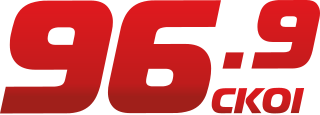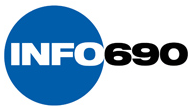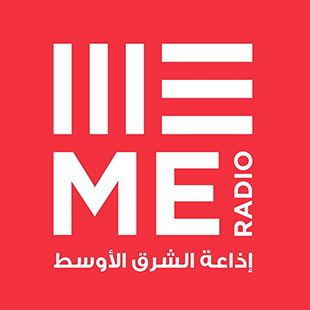Related Research Articles

VOAR-FM is a Canadian radio station, which airs a Christian radio format. It is licensed to Mount Pearl, Newfoundland and Labrador, and serves the St. John's metropolitan area. VOAR is owned by the Seventh-day Adventist Church in Newfoundland and Labrador. Its radio studios and offices are on Topsail Road in Mount Pearl.
Aboriginal Voices Radio Network was a Canadian radio network, which primarily broadcast music programming and other content of interest to aboriginal people. As of June 2015, the network operated stations in Toronto, Ontario, Calgary and Edmonton in Alberta, and Vancouver, British Columbia. All of its stations were licensed as rebroadcasters of its flagship station, CKAV-FM in Toronto. The network's administrative office was located in Ohsweken, Ontario, on the Six Nations Indian reserve near Brantford. The stations' music programming consisted mainly of adult contemporary music, along with specialty programs focusing on aboriginal-oriented content.
CKOF-FM is a French-language commercial radio station in Gatineau, Quebec, serving the National Capital Region including Ottawa. Owned and operated by Cogeco, it broadcasts a talk radio format, calling itself "104,7 FM". Some programming is shared with sister station CKOI-FM Montreal. The radio studios and offices are in the Chemin des Terres neighbourhood of Gatineau.
The following media outlets are located in Canada's National Capital Region, serving the cities of Ottawa, Ontario and Gatineau, Quebec. The two cities, which are adjacent and each receive virtually all television and radio stations operating in either city, are considered a single media market.
CBLA-FM is a non-commercial radio station in Toronto, Ontario, Canada. Owned and operated by the Canadian Broadcasting Corporation, the station is the flagship station of the CBC Radio One network, broadcasting a mix of news and talk. In addition to the Toronto market, CBLA also reaches much of Central Ontario with a network of twelve rebroadcasters. The studios are in the Canadian Broadcasting Centre.

CBL-FM is the flagship station of the CBC Music network. It is a non-commercial station, licensed to Toronto, Ontario, and is owned by the Canadian Broadcasting Corporation.

CKOI-FM is a commercial FM radio station in Montreal, Quebec, Canada. It airs a French-language CHR/Top 40 radio format and is owned and operated by Cogeco. The studios are in Place Bonaventure at 800 rue de la Gauchetière ouest in Montreal.
The Aboriginal Multi-Media Society (AMMSA) is an Aboriginal publisher in Canada. AMMSA was established in 1983 under the Alberta Societies Act and launched its first publication in March 1983 – simply titled AMMSA. The name of this publication was later changed to Windspeaker in March 1986.

CINF was a French language Canadian radio station located in Montreal, Quebec.

CINW was the final call sign used by an English language AM radio station in Montreal, Quebec, which, along with French-language sister station CINF, ceased operations at 7:00 p.m. ET on January 29, 2010. Owned and operated by Corus Quebec, it broadcast on 940 kHz with a full-time power of 50,000 watts as a clear channel, Class A station, using a slightly directional antenna designed to improve reception in downtown Montreal.

CFFB is a Canadian radio station, broadcasting at 1230 AM. It operates a nested FM rebroadcasting transmitter, CFFB-FM-3 at 91.1 MHz in Iqaluit, Nunavut. The station broadcasts the programming of the CBC Radio One network, and serves as the regional network centre for Nunavut for the CBC North service.

CBY is a clear-channel public radio station in Corner Brook, Newfoundland and Labrador. It is owned by the Canadian Broadcasting Corporation and it carries the CBC's Radio One network. The transmitter is off the Trans-Canada Highway near Massey Drive in Corner Brook.

CFNR-FM is a Canadian radio station based in Terrace, British Columbia, owned and operated by Northern Native Broadcasting (Terrace). The station operates at 92.1 FM from the station headquarters in Terrace. The programming reflects and is broadcast to over 70 First Nations communities in northern and central British Columbia and has an audience of over 150,000 listeners. Programming of CFNR-FM is distributed to numerous repeater stations in the region.

CHOU is a multilingual Canadian radio station broadcasting in Montreal, Quebec at 1450 kHz and retransmitted at 104.5 MHz. The main programming is in Arabic language and caters for various Arab and Middle Eastern communities in Greater Montreal and vicinity in Arabic including Lebanese, Syrian, Egyptian and Maghrebi dialects. CHOU also runs a two-hour weekly show in Armenian. It is also offered online and on various applications.

CFEL-FM is a French-language Canadian radio station located in Quebec City, Quebec, but the station's official city of license is Lévis.
This is a timeline of the history of the Canadian Broadcasting Corporation.

The Aboriginal Peoples Television Network is a Canadian specialty channel. Established in 1992 and maintained by governmental funding to broadcast in Canada's northern territories, APTN acquired a national broadcast licence in 1999. It airs and produces programs made by, for and about Indigenous peoples in Canada and the United States. Based in Winnipeg, Manitoba, it is the first network by and for North American indigenous peoples.

Souvenirs Garantis(French for "Memories Guaranteed") was a network of French-language classic hits radio stations broadcasting throughout Quebec, Canada. Anchored by CFOM-FM 102.9 in Quebec City, the format was created by Corus Entertainment, as part of the Corus Québec group of stations.
Northern Native Broadcasting is a non-profit Indigenous communications company in British Columbia which owns and operates radio stations whose music and primary content is intended to be of interest to Indigenous peoples in Canada.

CJWE-FM is a radio station in Calgary, Alberta. Owned by the Aboriginal Multi-Media Society, it broadcasts programming targeting southern Alberta's First Nations communities, including mainstream country music, and specialty shows featuring indigenous music or presented in native languages such as Stoney. It is similar in format to its sister radio network CFWE, which focuses primarily on northern Alberta's First Nations communities.
References
- ↑ Cindy J. Sinko, "Reflections: Radio is a sound salvation". Stratford Beacon Herald, July 10, 2020.
- ↑ "CKOI-FM Maintains Super-Power Status With Solution From Dielectric". Creative Planet Network, February 14, 2012.